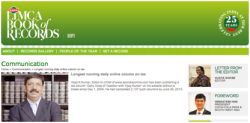Determination of place of removal - CBEC Clarification

21.10.2014
Tuesday
PLACE of Removal has been defined in the CENVAT Credit Rules in the last Budget by inserting sub rule "qa” in Rule 2. The definition reads as:
'(qa) "place of removal” means-
(i) a factory or any other place or premises of production or manufacture of the excisable goods;
(ii) a warehouse or any other place or premises wherein the excisable goods have been permitted to be deposited without payment of duty;
(iii) a depot, premises of a consignment agent or any other place or premises from where the excisable goods are to be sold after their clearance from the factory,
from where such goods are removed;'
This definition is exactly identical to the definition of Place of Removal as per Section 4(3)(c) of the Central Excise Act.
In the CENVAT Credit Rules, input services include certain services up to the Place of Removal.
Now where exactly is this Place of Removal? This has been a long and much revived dispute in Central Excise.
CBEC had issued two Circulars namely 37B order no 59/1/2003 dt 3-3-2003 and circular no 97/8/2007 dt. 23.8.2007, which sought to suggest that the place where sale takes place is the place of removal.
Then, where does Sale take place?
The Board clarified that as: the place where the transfer in property of goods takes place from the seller to the buyer.
How do you know where the transfer in property takes place? Board says go to the Sale of Goods Act, 1930. And Board says even the Tribunal said so in Associated Strips Ltd Vs Commissioner of Central Excise, New Delhi 2002-TIOL-437-CESTAT-DEL, wherein the Tribunal observed,
"17. Now we are to consider the facts of the present case as to find out when did the transfer of possession of the goods to the buyer occur or when did the property in the goods pass from the seller to the buyer. Is it at the factory gate as claimed by the appellant or is it at the place of the buyer as alleged by the Revenue? In this connection it is necessary to refer to certain provisions of the Sale of Goods Act, 1930. Section 19 of the Sale of Goods Act provides that where there is a contract for the sale of specific or ascertained goods the property in them is transferred to the buyer at such time as the parties to the contract intend it to be transferred. Intention of the parties are to be ascertained with reference to the terms of the contract, the conduct of the parties and the circumstances of the case. Unless a different intention appears; the rules contained in Sections 20 to 24 are provisions for ascertaining the intention of the parties as to the time at which the property in the goods is to pass to the buyer. Section 23 provides that where there is a contract for the sale of unascertained or future goods by description and goods of that description and in a deliverable state are unconditionally appropriated to the contract, either by the seller with the assent of the buyer or by the buyer with the assent of the seller, the property in the goods thereupon passes to the buyer. Such assent may be expressed or implied and may be given either before or after the appropriation is made. Sub-section (2) of Section 23 further provides that where, in pursuance of the contract, the seller delivers the goods to the buyer or to a carrier or other bailee (whether named by the buyer or not) for the purposes of transmission to the buyer, and does not reserve the right of disposal, he is deemed to have unconditionally appropriated the goods to the contract.”
The CBEC in its latest clarification issued yesterday reiterates:
The place of removal needs to be ascertained in term of provisions of Central Excise Act, 1944 read with provisions of the Sale of Goods Act, 1930. Payment of transport, inclusion of transport charges in value, payment of insurance or who bears the risk are not the relevant considerations to ascertain the place of removal, the place where sale has taken place or when the property in goods passes from the seller to the buyer is the relevant consideration to determine the place of removal.
Easier said than done. As far as excise officers in the field are concerned, there are only two principles or rules:
1. In the Central Excise Assessments, include the cost of transport in the assessable value irrespective of the place of sale or place of removal.
2. In CENVAT Credit, don't allow credit for outward transport irrespective of the place of removal.
There are hundreds of cases pending at various stages because the Department refuses to understand the concept of valuation or CENVAT Credit.
CBEC CIRCULAR NO. 988/12/2014-CX., Dated: October 20, 2014
Place of Removal - Hard to place
THE definition of "place of Removal” has perhaps contributed the maximum amount of litigation in Central Excise. The Department's irresistible urge to levy excise duty on transport charges was and still is the main reason for all the disputes.
In 1995, the Supreme Court in the Madras Rubber Factory case - 2002-TIOL-49-SC-CX-LB held that in cases where the goods are sold in the course of wholesale trade at place or places outside the place of removal, i.e., at depots, as in the case of Madras Rubber Factory, the expenses incurred in maintaining and running the said depots cannot be deducted from the price but the cost of transportation along with the cost of insurance on freight can be deducted as held in Bombay Tyre International. This holding does not, of course, prevent the assessees from representing their case to the Government if they are so advised in this behalf and it is for the Government to consider the same in the light of all relevant circumstances.
Then the definition of Place of Removal read as:
"Place of removal” means
(i) a factory or any other place or premises where the excisable goods are produced or manufactured;
(ii) a warehouse or any other place or premises where any excisable goods have been permitted to be deposited without payment of duty according to rules and from where such goods are removed.
The MRF judgement came in 1995 and P. Chidambaram became the Finance Minister in 1996. In his 1996 Budget, he amended the above provision to insert a third clause which read as:
iii. a depot, premises of a consignment agent or any other place or premises from where the excisable goods are to be sold after their clearance from the factory.
The MRF judgement was successfully undone!
But can transportation be really brought under excise control?
Arguing in the famous Bombay Tyre International case - 2002-TIOL-374-SC-CX-LB, Nani Palkhiwala propounded three principles, which he contended, formed the essential characteristics of a duty of excise.
Firstly, excise is a tax on manufacture or production and not on anything else.
Secondly, uniformity of incidence is a basic characteristic of excise.
And thirdly, the exclusion of post-manufacturing expenses and post-manufacturing profits is necessarily involved in the first principle and helps to achieve the second.
In DDT 1066 - 05.03.2009, I wrote, Revenue seems to be having a love for realising Revenue on freight. They have been fighting hundreds of cases in all appellate forums to get that extra pie of excise duty on transport charges. Right from the Supreme Court down to some rare ‘reasonable' Commissioners, everyone had been repeatedly telling them, "your duty is on manufacture, not transport” - but they don't listen. Whatever you write in your Rules, the fact remains that you cannot simply levy excise duty on transport charges.
One reason for such frivolous appeals even after the issue had been settled long ago is, ‘the Revenue thinks they have no costs for litigation'.
To add to the confusion, they imported the concept of "place of removal” to CENVAT Credit and litigation continues unabated.
Can't they give a two-line clarification that transport charges are not to be included in the assessable value and that credit will be allowed on transportation charges? The whole concept of ‘place of removal' should be removed from the statute.
Transport Charges - the US Law
SECTION 53.92 of the Code of Federal Regulations Title 27 stipulates:
Transportation, delivery, insurance, or installation charges - (1) Charges incurred pursuant to sale. Charges for transportation, delivery, insurance, installation, and other expenses actually incurred in connection with the delivery of an article to a purchaser pursuant to a bona fide sale shall be excluded from the sale price in computing the tax. Such charges include all items of transportation, delivery, insurance, installation, and similar expense incurred after shipment to a customer begins, in response to the customer's order, pursuant to a bona fide sale.
Only actual expenses to be excluded. Where a separate charge is made for transportation or other expenses incurred in connection with the delivery of an article to the purchaser pursuant to a bona fide sale, there shall be excluded in arriving at the sale price subject to tax only that portion of the charge which represents the actual expenses incurred for the transportation or other excludable expenses. Where a separate charge is less than the actual expense, the difference is presumed to be included in the billed price. Such difference, together with the separate charge, shall be excluded in arriving at the sale price on which the tax is computed. Similarly, where no separate charge is made but the manufacturer, producer, or importer incurs an expense of the type to which this paragraph has application, the amount of such expense actually incurred shall be excluded from the sale price on which the tax is computed.
Transportation, delivery, or installation services performed by manufacturer. For purposes of computing the taxable sale price of articles, it is immaterial whether the transportation, delivery, or other services of the type to which this paragraph has application are performed by a common carrier or independent agency for or on behalf of the manufacturer, producer, or importer, or are performed by the manufacturer, producer, or importer with the use of its own vehicles or other facilities. Thus, where a manufacturer, producer, or importer performs the transportation, delivery, or other services with its equipment, tools, employees, etc., the cost of such services allocable to the sale of the taxable article shall be excluded.
NACEN Hindupur cleared by FM - Largest Civil Service Academy
THE debate over the location of NACEN at Hindupur in Andhra Pradesh is over. We understand that the FM has cleared the file. The State Government has given 500 acres of land for this academy. With 500 acres of land, this academy will have the largest land area for any civil service academy in the country. Let us hope that an academy we can all be proud of will come up at Hindupur.
Income Tax Deputy Commissioner in CBI net with 25 lakh bribe
THE CBI arrested a Deputy Commissioner of Income Tax in Hyderabad yesterday on the charge of accepting a bribe of Rs. 23 lakhs. The agreed upon bribe amount was Rs. 25 lakhs, out of which Rs. 2 lakhs were for an Inspector. The Deputy Commissioner, the Inspector and a CA who acted as a conduit are under CBI custody.
Central Excise Supdt demands a bribe of Rs.3 crore - caught with Rs. 20 lakh.
WHILE the Hyderabad Income Tax Deputy Commissioner was content with 25 lakhs, we hear of a case of a Superintendent of Central Excise in Ludhiana who asked for a bribe of Rs. 3 Crores. He wanted Rs. 60 lakh before Deepavali and collected Rs. 20 lakh yesterday only to be caught red handed. His deepavali will be inside a dark jail.
Jurisprudentiol – Wednesday's cases
 Central Excise
Central Excise
Interest on differential duty paid due to price escalation - Issue covered by Supreme Court decision in case of SKF India Ltd - No reason to take different view by following Karnataka High Court decision in BHEL case: HC.
THE issue is whether the assessee is liable to pay interest on differential duty paid on supplementary invoices due to price escalation. The assessee is in appeal before the High Court against the order of Tribunal confirming the demand by following the ratio of the Supreme Court decision in case of SKF India Ltd - 2009-TIOL-82-SC-CX.
The assessee tried to distinguish the ratio of SKF India Ltd and relied on the decision of Karnataka High Court in case of BHEL Ltd - 2010-TIOL-437-HC-KAR-CX which is in favour of the assessee.
Income Tax
Whether when Revenue has failed to establish that business was so arranged that more profit could be attributed to eligible unit, even then benefit of Sec 80IA can be denied - NO: HC
THE assessee company set up a new unit for manufacture and sale of Lamination tordials cores and transformers. It was claimed by the assessee that said unit was located in industrially backward area therefore the profits and gains of the said unit were eligible for 100% deduction u/s 80IA. For the purpose, the component of income included the interest income earned by the assessee company on account of charge of overdue interest from customers to whom sales were executed from new unit on account of late payment of their dues and also towards bank interest. The total claim for the deduction u/s 80 IA was at Rs. 65,24,023/-, but the A.O. allowed partial deduction of Rs. 25,93,772/-. The remaining amount was disallowed by the A.O. and the same was upheld by the CIT(A). However, the Tribunal allowed entire claim of the assessee.
THE issue before the Bench is - Whether when the assessee maintains separate books for its unit located in backward area and the Revenue has failed to establish that business was so arranged that more profit could be attributed to the eligible unit, even then benefit of Sec 80IA can be denied. And the answer goes in favour of the assessee.
Customs
Notfn. 64/88-Cus - It is settled position in law that it is for person who is claiming benefit of exemption Notification to lead evidence to show that he is entitled for the same - Appellant has completely failed in this regard: CESTAT
THE appellant imported between March and August 1991 medical equipment claiming the benefit of Notification 64/88-Cus dated 01/03/1998 on the strength of a Customs Duty Exemption Certificate issued by the Director General of Health Services.
The conditions mentioned in the certificate were - (i) the appellant undertakes to give free treatment, on an average, to at least 40% of the outdoor patients; (ii) to give free treatment to all indoor patients belonging to families with an income less than Rs. 500/- per month, and to keep for this purpose, at least 10% of all the hospital beds reserved for such patients and to give free treatment at charges either on the basis of income of the patients concerned or otherwise to patients other than those specified above.
See our Columns for the judgements
Until Tomorrow with more DDT
Have a nice day.
Mail your comments to vijaywrite@tiol.in










 Central Excise
Central Excise 






